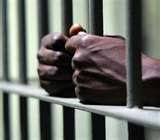The Death of the Black Man

I got a phone call from a friend that works as an instructor for Upward Bound. She's white but has a serious heart for urban youth. We were both talking about how the black man is becoming extinct, which is a major topic of concern in the type of research that she does. I had the same conversation two weeks ago with a few friends. The black man is becoming extinct and we, myself included, need to step up
Below is an excerpt from research done by the Joint Center for Political and Economic Studies Health Policy Institute. I've copied and pasted some of the stats for you. Read the entire report here. Let me know what you think.
Black Male Students at Public Flagship Universities in the U.S. Status, Trends, and Implications for Policy and Practice
By Shaun R. Harper For JOINT CENTER FOR POLITICAL AND ECONOMIC STUDIES HEALTH POLICY INSTITUTE,WASHINGTON, D.C. THE DELLUMS COMMISSION Better Health Through Stronger Communities: Public Policy Reform to Expand Life Paths of Young Men of Color
Copyright 2006 by the Joint Center for Political and Economic Studies
1090 Vermont Ave., Suite 1100, NW, Washington, DC, 20005
• In 2002, black men comprised only 4.3 percent of all students enrolled at institutions of higher education, the same as in 1976.
• Across all racial/ethnic groups, gender gaps in enrollment are widest among black students, with black women outnumbering their male counterparts by 27.2 percentage points.
• Between 1977 and 2003, black male degree attainment increased by an average of 0.2 percentage points. The most significant gains were at the associate’s degree level. Only 147 more doctorates were awarded to black men in 2003 than in 1977.
• Across all degree levels, white men earned more than ten times the number of degrees awarded to their black male counterparts.
• Nationally, more than two-thirds (67.6 percent) of black men who start college do not graduate within six years, which is the lowest college completion rate among both sexes and all racial/ethnic groups in higher education.
• In 2004, 10.4 percent of male undergraduates in higher education were black. Yet, black men represented 30.5 percent of all male student athletes in Division I sports, the National Collegiate Athletic Association’s highest level of competition. They comprised 54.6 percent of football teams and 60.8 percent of men’s basketball teams at Division I institutions.
• Across four cohorts of college student-athletes, 47 percent of black men graduated within six years, compared to 60 percent of white males and 62 percent of student-athletes overall. The averages across four cohorts of basketball players were 39 percent and 52 percent for black men and white men, respectively. Forty-seven percent of black male football players graduated within six years, compared to 63 percent of their white teammates. In each section of this report, these inequities are examined more closely within the context of public flagship universities in each state. Some key findings include the following:
• In 2000, black men represented 7.9 percent of the 18- to 24-year-olds in the U.S. population. Across the 50 flagship universities examined in this report, they comprised 2.8 percent of undergraduate student enrollments in 2004.
•In 44 states, there were disparities between the enrollments of black males at the public flagship institutions and their representation among 18- to 24-year-old citizens within those states.
• In 2004, 30 of the 50 flagship universities each enrolled less than 500 black male undergraduates.
• The mean six-year graduation rate for black men at flagship universities was 44.3 percent in 2004, compared to 61.4 percent for white men and 53.2percent for black women.
• At 21 flagship institutions, more than one out of every five black men on campus was a student athlete in 2004. At 42 institutions, more than one of every three football players was black. Fifty percent or more of the basketball teams were comprised of black men at 38 public flagship institutions. Only at three universities did black male student-athletes comprise less than 20 percent of the men’s basketball teams.
• At 43 public flagship universities, six-year graduation rates were higher for white male student-athletes than for their black male teammates. The average gap was 18.9 percentage points.
• Only 12 flagship universities graduated more than half of their black male student-athletes within six years; 13 institutions graduated less than one-third of these students.

Comments